Bastogne 17pdr M10c Achilles MkII
These Surviving 17pdr Achilles Tank Destroyers are in Bastogne in the Belgium Ardennes. They have been restored and can be seen at the Bastogne Barracks, Rue de La Roche, 40, Bastogne.
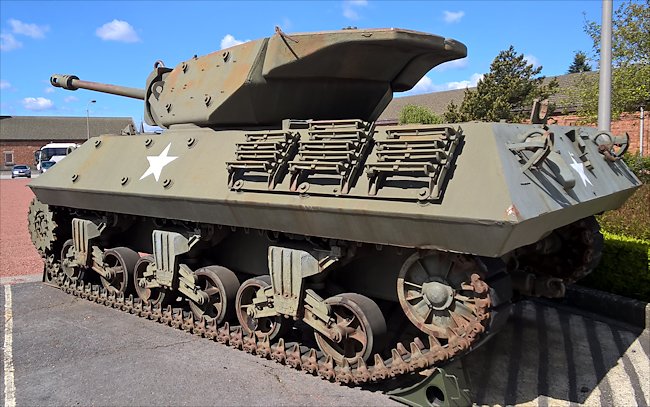
The 17pdr Achilles Tank Destroyer at the Bastogne Barracks. The rear of the open turret had to be weighted to steady the large gun.
Location
The Bastogne Barracks can be found at 40 Rue de la Roche (N834) in Bastogne just north west of the city centre. They open at 10am and close at 4pm. You really need to get there by 2pm as there is a lot to see. It is an operational military camp with a tank restoration centre attached. You have to wait to go on a guided tour. You cannot wander around on your own. The only day it is closed is Monday. Many of the tanks have been restored to running condition. Have a look at their Facebook page for information about new events.
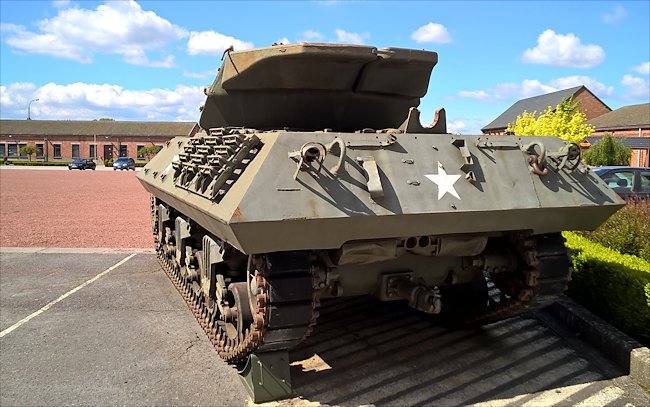
17pdr M10c Achilles MkII Tank Destroyer in Bastogne Belgium with the large gun counterweight attached to the rear of the turret.
Specifications
The M10C Achilles was based on the M4 Sherman tank Chassis. It was powered by a General Motors 6046 conjoined twin 6-71s diesel engine that produced 375 hp. It has a top road speed of 32 mph (52 km/h) with an operational range of around 186 miles (300 km). It had a five man crew: commander, driver, gunner, loader and loaders assistant. Its armour was thin but sloped. It ranged from 9mm to 57.2mm in thickness.
Its main gun was the powerful British Ordnance Quick Firing OQF 17 pounder Anti Tank gun that could penetrate the frontal armour of Tiger and Panther tanks. A machine gun was fitted externally to the open turret. This was a .50cal Browning M2HBB AA machine gun or a Bern Light Machine Gun.
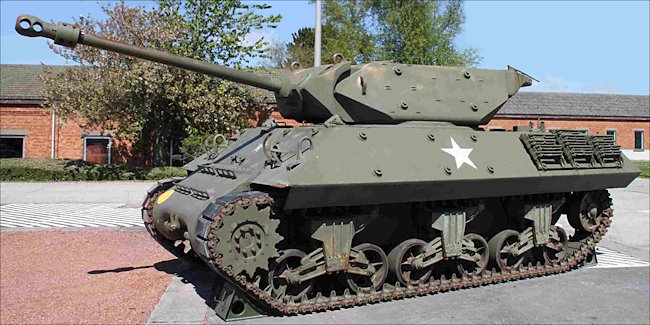
The 17pdr Achilles Tank Destroyer gun was fitted with a muzzle brake to reduce recoil and extend the life of the gun barrel.
Why are their British tanks on display at Bastogne?
Although the Ardennes is offensive is associated with American infantry and tanks, contrary to popular belief and Hollywood films, British forces also played a vital role. In the early stages of the offensive Field Marshal Montgomery had recognise the importance of the River Meuse to the Germans.
This is why when you visit the town of la Roche and the Bastogne Historical Center, you will see British M10 Achilles tank destroyers set up as monuments to the brave soldiers that liberated the town, yet again from the Germans.
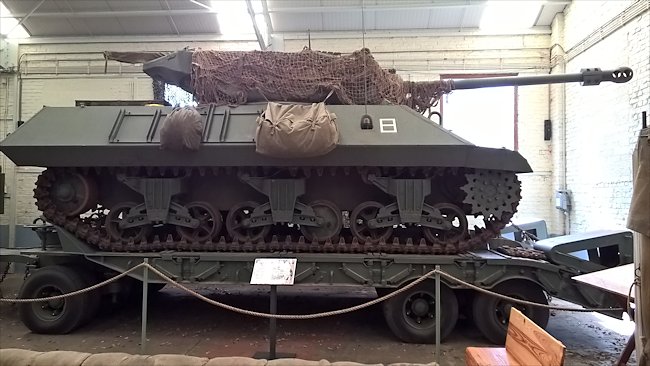
M10c Achilles MkII 17pdr British Tank Destroyer inside one of the hangers in Bastogne Barracks
There was now a solid defensive line of British and American troops and tanks,, that the Germans could not hope to break. The German task of forming a defendable bridgehead over the River Meuse was now unobtainable. Hitler was still issuing orders for the advance to the original objective of capturing the port of Antwerp to continue but at this stage it was possible to achieve. The outcome of the Ardennes offensive represented an irreplaceable loss of men and machines that were sorely needed for the continuing defence of Germany.
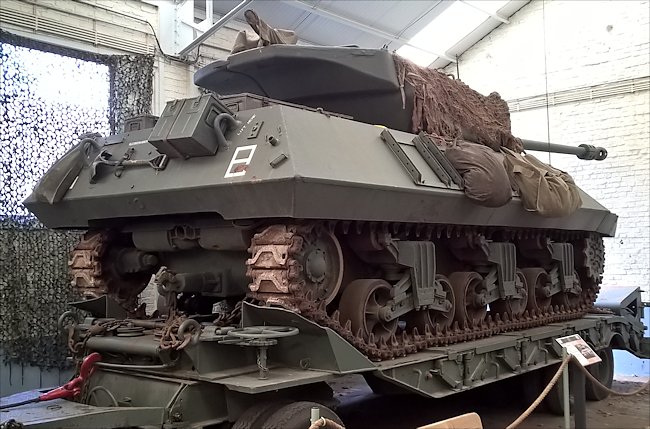
M10c Achilles MkII 17pdr British Tank Destroyer was based on the M4 Sherman tank chassis
What is the difference between the MkI and MkII M10c Achilles?
The American's fitted three different types of rear turret counter weights on their M10 Wolverines. The earliest was simple plates of steel. When the turret rear was redesigned a triangular counterweight was added to the back of the turret. Later the large dolphin tail style rear turret counter weight was added to give more stability. M10s fitted with the first ones were replaced and upgraded on U.S. M10 Wolverines in service, in early 1943O.The original flat plate counter weights were cut off and replaced with the triangular type. Only the second and third type of counterweights were used on the British M10c Achilles. They were designated M10c Mk1 and M10c MkII but no-one really used official designations except in the rare occasion it effected the requirement for spares.
WW2 tank books

